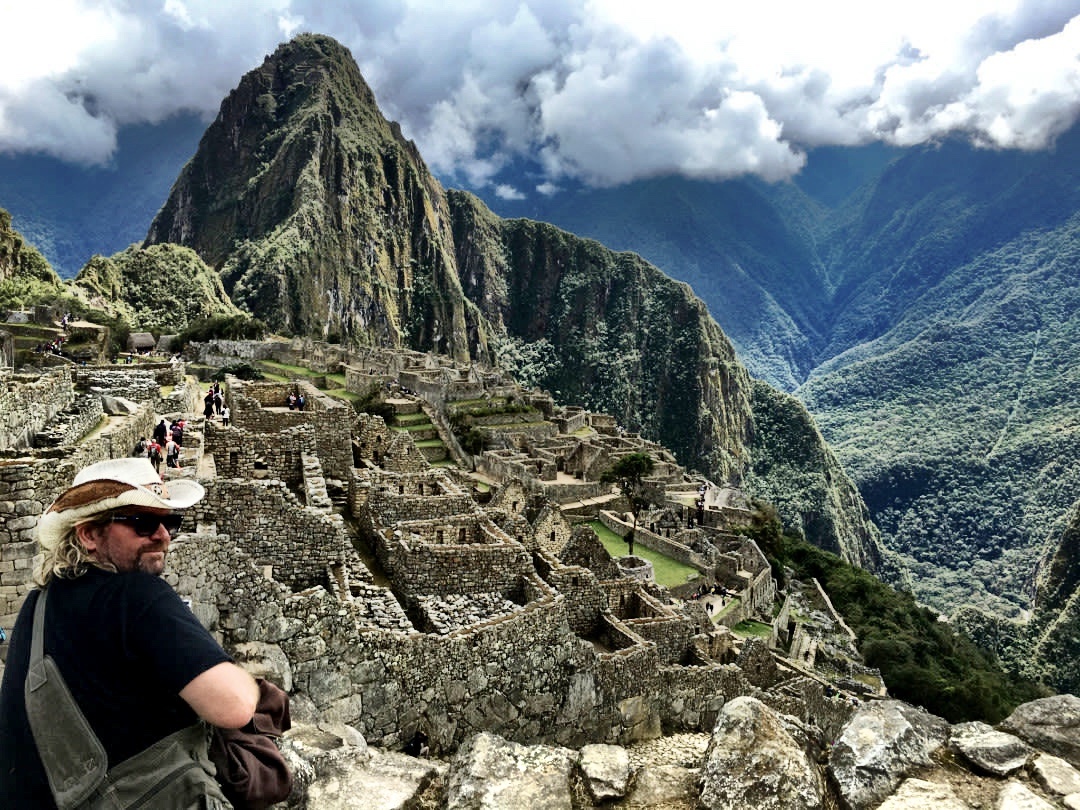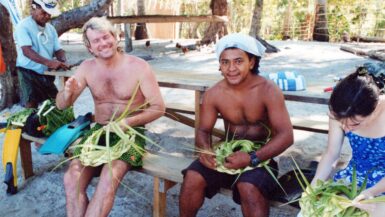Machu Picchu. The name conjures up images of impossibly tall mountains, llamas, colorfully dressed natives and amazing ruins. Machu Picchu means “old mountain” in Quechua. “Inaccessible mountain” might be a better name since there’s nothing really easy about getting there. However, with a little patience and determination, anyone can make it to this UNESCO world heritage site and what many consider to be one of the most amazing wonders of the world. I was there last week. It was my second time in almost 25 years to visit this archaeological gem. Was it different? The towns surrounding it certainly had changed, the crowds had increased ten-fold, but Machu Picchu looked exactly the same as the way I had left it over 2 decades ago. Make no mistake. It is a truly magical place.
To get to Machu Picchu can be a tricky process. If you’re coming from another country, you’ll probably have to fly into Lima, Peru. Lima isn’t the most exciting destination, so most travelers don’t linger for very long in this capital city. From there, most people choose the hour and 20 minute flight to Cusco rather than the alternate 20 hour bus ride through the Andes. After you arrive in Cusco, you must make your way to Ollantaytambo by car or bus. From there, the road ends and you can either walk for 5 days (Inca Trail) or take the pricey train to Aguas Calientes. You’re almost there. The final steps involve buying a ticket to get into Machu Picchu and taking the 30 minute bus ride to the ruins at the top of the mountain. Sounds pretty complicated, doesn’t it? Even worse than that, there’s literally no information available to book it ahead, unless you do it with a tour group. The government website for tickets is sketchy at best and there’s a 2500 person limit to how many tourists can visit the ruins in a day. If all of this seems like reason not to go, relax. You’re in South America. Where there’s a will, there’s a way.
The most complicated thing about Peru is that any hotel or ticket that you buy needs to be connected with your passport. One theory is that this keeps “scalpers” from buying up all the tickets and selling them to tourists at ridiculous prices. You have to have your passport to buy a bus ticket, a Machu Picchu entrance and even to get on the train. The lines might look a little formidable at first, but the Peruvians seem to have gotten the process down to where it moves fairly quickly. You can show up in Cusco with nothing and book the whole thing through a little sidewalk tourist agency. It costs a few dollars more, but they can navigate the websites, check availability and have someone waiting for you at the train station with a sign. If you’ve never had someone meet you with a sign before, it makes you feel a little important for a few minutes at least. So, without any further ado, let me tell you the best way to do this.
Between Cusco and Ollantaytambo, there are several interesting towns and ruins. This area is touted as the Sacred Valley and can be visited by taxi or tour bus in a day or two. There are four main sites right outside of Cusco. Sacsayhuamán, which is pronounced “sexy woman” is the most impressive of the nearby ruins. The walls are composed of giant blocks of stone that are so precisely cut, there is no space between them to even fit a knife blade. It’s a baffling archaeological wonder that amazes even the most jaded traveler. There’s no carvings or buildings per se, but the walls are impressive and the wandering alpacas make a great photo op. Nearby Tambomachay is an interesting site with aqueducts, waterfalls and canals that run through terraced hills. There’s a short stop at a former Incan fort and a sacred rock with a small cave nearby that is included in your Incan valley ticket and worth a small visit.
If you the time, you can explore the somewhat touristy Pisac market on Sunday and the town’s nearby ruins. Less frequented and arguably more authentic, is the Chinchero market on the way to Ollantaytambo. There’s no touristy items for sale at this market and it’s only open a few days each week. However, you can buy that live llama you’ve always wanted, local fruits and vegetable or treat yourself to a fried Guinea pig washed down with the locally made chicha, a fermented home brew made from corn. Now that’s a market!
Thirty minutes north lies the amazing Incan salt pools of Salineras. Natural salt rich hot springs in the area have been redirected into small reservoirs terraced into the cliff sides for hundreds of years. The salt collected is is sold in chocolate bars, bath salts, and dozens of other products. The site is a photographer’s dream with its’ salt encrusted white pools cascading down the mountainside. It’s definitely worth the bumpy road ride to get there.
Nearby Moray is an interesting stop accessible through the back roads between Salineras and Ollantaytambo. The site is made of terraced rings cut into mountain like a crater. This site has been interpreted as an experiment in agriculture since each terrace is at a different temperature and certain crops can be grown at different altitude levels. From this site, most people continue to Ollantaytambo. The ruins and fortress walls are visible from anywhere in this small town and it makes a great place to spend the night if you want to catch the early train to Aguas Callientes. The town is full of great tourist stalls, cute shops and a worthwhile chocolate museum with free tastings. It’s a picturesque little village surrounded by dramatic mountains with some nice restaurants.
When you get to Aguas Calientes, you’ll soon discover that this little town has no other purpose than to process the thousands of visitors that arrive daily. Chances are you’ll go directly to the Machu Picchu ticket line, then to the bus ticket line, then the bus line, then the entrance line to get into Machu Picchu. To get to Machu Picchu from Ollantaytambo, you’ll spend at least $110 on the train, $20 on the bus and about $50 to get in to the archaeological site. I’m convinced there’s a way to bypass this transportation monopoly, but sometimes it’s easier to just pay up and do what you’re told to do.
Once you’re inside the pearly gates, you’ll want to get away from the tour groups. Pushing, loud chatter and photo bombing from amateur travelers and robotic tour groups can ruin your first impression of these marvelous ruins, so make your way up the hill and get out of their clutches. Alternatively, you can always visit the ruins in the late afternoon and miss the bus loads of tourists doing the ruins from Cusco and back in one day. Unlike ruins like Pompeii or Angor Wat, there’s not much to see inside the actual buildings. Machu Picchu is best enjoyed from above, looking down at its complex of buildings and Huayna Picchu looming behind it. You can take a 2 hour guided tour to learn more about the mysteries of this site, but setting up a private one so you don’t have to chase a bobbing red flag around, is money well spent. There’s trails heading in several directions from the ruins including a 30 minute hike to glimpse the remains of impassible Incan bridge. The air is thin in the Andes mountains, so you’ll be winded after a few steps and if you’re not acclimated, you run a risk of altitude sickness. Many people swear that drinking coca tea and/or chewing the leaves helps your body cope these symptoms. You can also get an altitude sickness prescription before you leave home.
Once you’ve seen everything, now what? Stand in line for the bus and reverse the steps. You can spend the night in Aguas Calientes, Ollantaytambo, or make the 4 hour trip back to Cusco. We did a night in each and my favorite was Ollantaytambo. Maybe it was the free chocolate.






Leave a reply
You must be logged in to post a comment.